Refer to my “Inglourious Fugue” intro for an explanation of what’s going on in this post. Here we’ll turn to an analysis of the first two chapters of Inglourious Basterds, viewing its construction as a fugue.
Roughly speaking, Chapters 1 and 2 correspond to the traditional Act I, providing the setup for the film.
Chapter 1: Once Upon a Time… In Nazi-Occupied France
The film opens with an exposition, introducing the voice of Perrier LaPadite, which will quickly be drowned out by that of Col. Hans Landa of the SS. Landa gets ample time to establish himself as the primary voice of the piece, introducing several themes that will be revisited throughout.
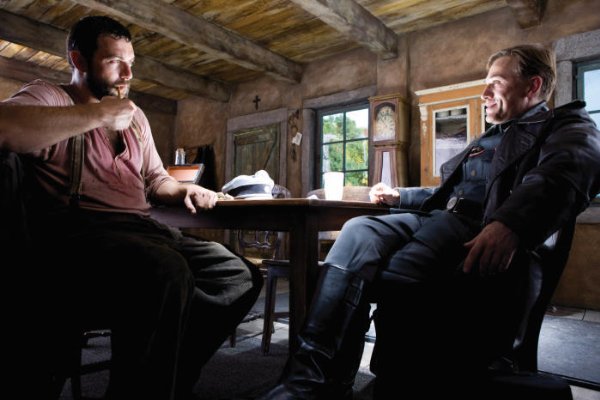
The first chapter is a slow build, establishing the tone of the film as a spaghetti Western that happens to take place during WWII (Chapter 1 is an homage to The Good, The Bad, and The Ugly). Landa‘s voice gradually establishes itself at the house of LaPadite, making its first flourish when he pulls out his giant pipe in a peacock-like display of masculinity. As Landa and LaPadite converse, the camera slowly drops down beneath the floorboards to show us the Dreyfus family hiding underneath, introducing the first (and primary) countersubject to Landa. There’s also a minor answer to Landa that pops up here, when he asks for a glass of milk.
Tarantino’s camera spins around the table as the Landa voice flits about with his monologue about the Germans (hawks) and the Jews (rats), creating dissonance within the subject. The Nazis enter the house, establishing themselves as an answer to Landa‘s subject, and we catch another glimpse of the Dreyfus’ eyes through the floorboards, which counterpoint the Nazis’ sub-voice as well.
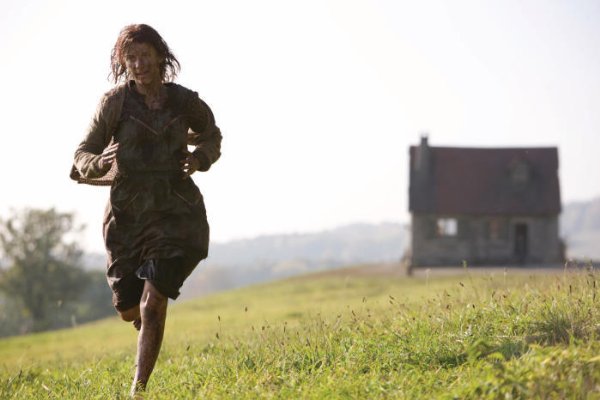
The Nazis’ voice peaks when they machine-gun the floor, killing all of the Dreyfuses except for Shosanna. As Shosanna escapes, her voice in the first chapter peaks. Landa‘s own subject rises as she runs across the field, fading out quickly after he chooses not to fire his Luger into her back, having fully established itself.
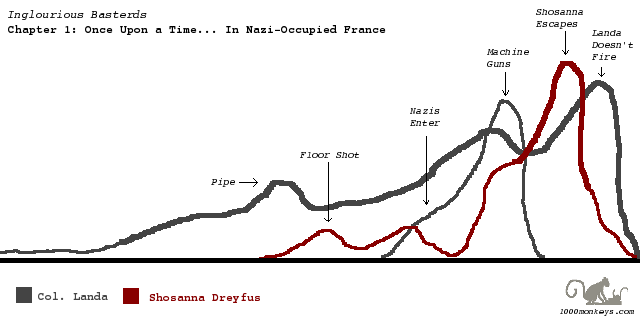
Chapter 2: Inglourious Basterds
In Chapter 2, a new voice is introduced, with Lt. Aldo Raine giving his recruiting speech to the rest of the Basterds. This is abruptly met with a countersubject when we cut to Hitler screaming, “Nein! Nein! Nein! Nein! Nein!” 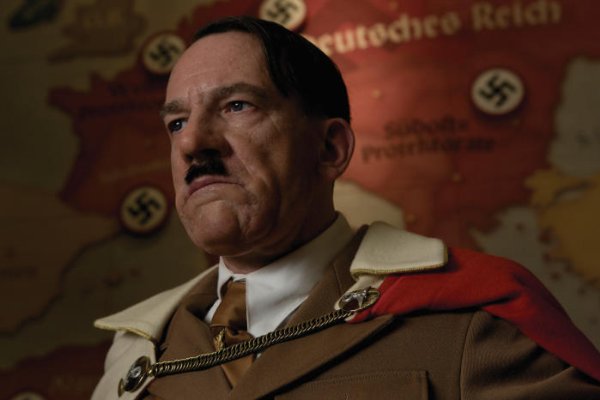 Here Hitler is serving as the same element as Landa did in the first chapter, as if to restate the same theme, this time in a different key. He interrogates Pvt. Butz, a sub-voice, on his encounter with the Basterds, and as Butz relates his tale in flashback, the two subjects of Chapter 2 play against each other.
Here Hitler is serving as the same element as Landa did in the first chapter, as if to restate the same theme, this time in a different key. He interrogates Pvt. Butz, a sub-voice, on his encounter with the Basterds, and as Butz relates his tale in flashback, the two subjects of Chapter 2 play against each other.
Tarantino cuts between Butz telling the story to Hitler and the images of the Basterds carrying out the deeds he’s describing. The Basterds‘ voice flourishes with the story of Sgt. Hugo Stiglitz as a flashback-within-a-flashback, which QT handles effortlessly (as he also did in Kill Bill Vol. 2).
We then get another answer to the Nazi/Hitler subject in the form of Sgt. Werner, who is quickly overshadowed by the voice of Lt. Raine. 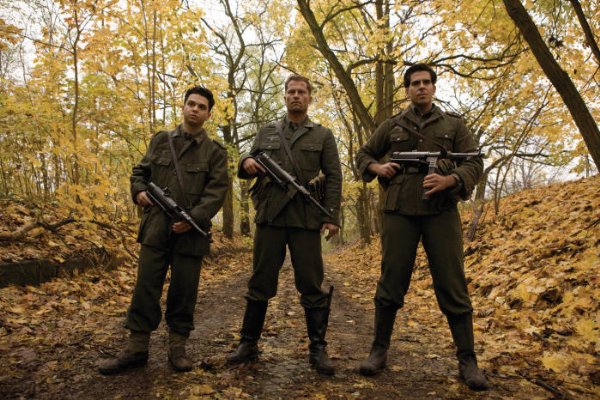 The peak of Chapter 2 for the Basterds comes when we’re introduced to Sgt. Donny Donowitz (“The Bear Jew“), who is commanded by Raine to oblige Werner‘s desire to die for his country, which he happily (and brutally) does.
The peak of Chapter 2 for the Basterds comes when we’re introduced to Sgt. Donny Donowitz (“The Bear Jew“), who is commanded by Raine to oblige Werner‘s desire to die for his country, which he happily (and brutally) does.
For the rest of the scene, QT again cuts back and forth between Butz telling his (abridged) story to Hitler and Raine completing the Basterds‘ subject for this chapter. The swastika-carving answer to the Basterds‘ subject is introduced as Chapter 2 winds down.
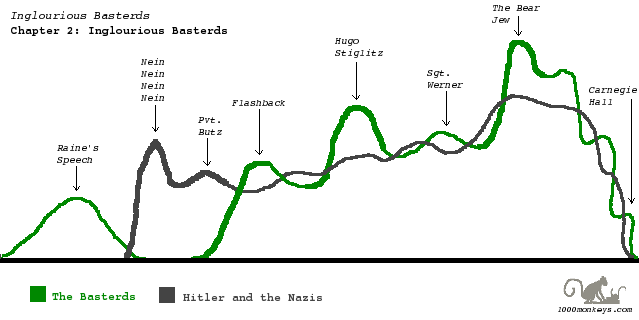
At this point, three of the fugue’s four primary elements have been established, and the tone of the overall piece has been set. In the next post, we’ll look at Chapters 3 and 4, where the stakes are increased significantly, and the structure continues to become more complex.


